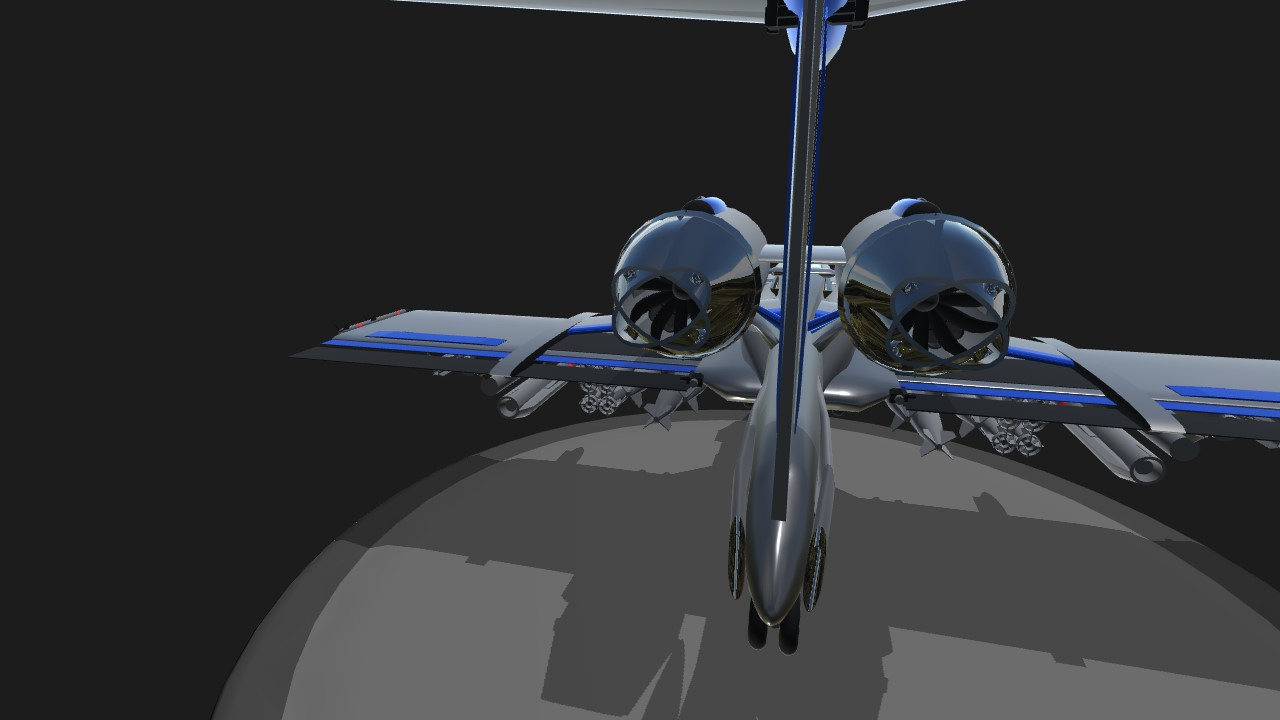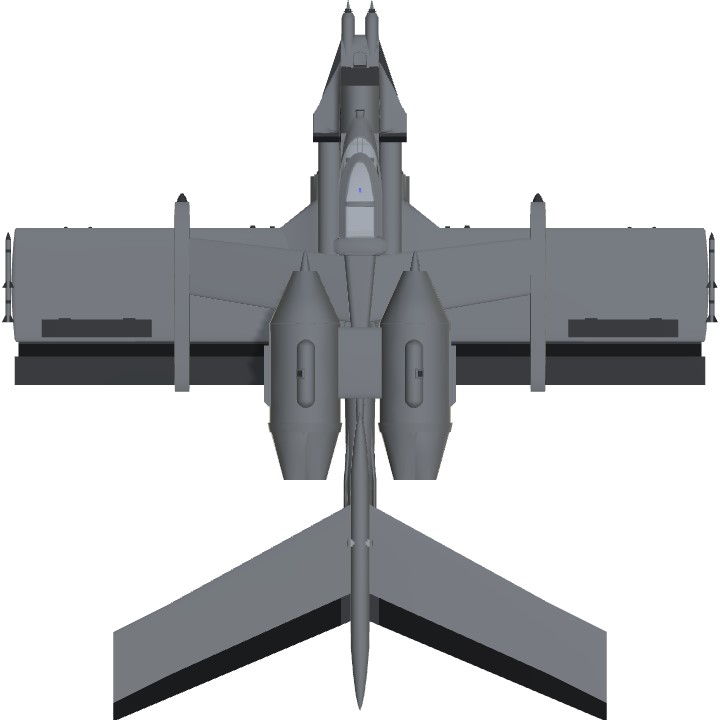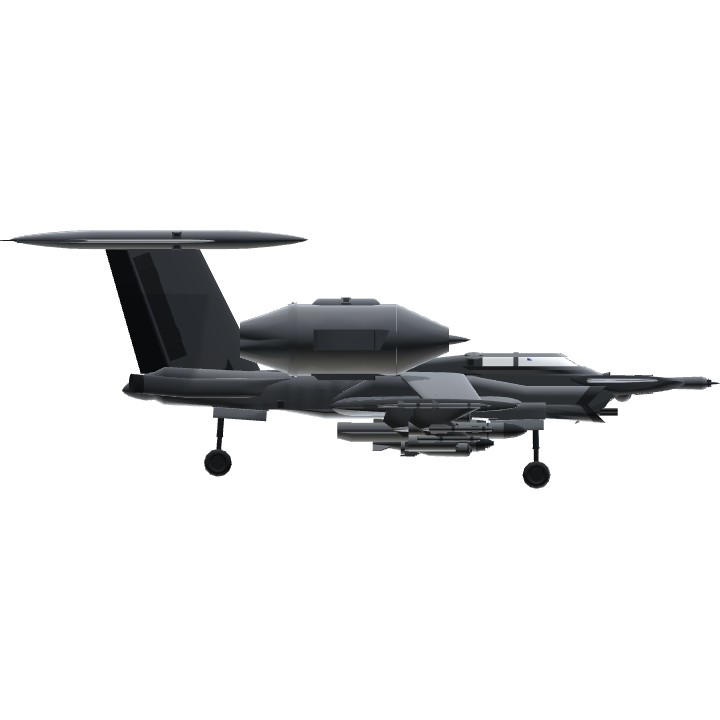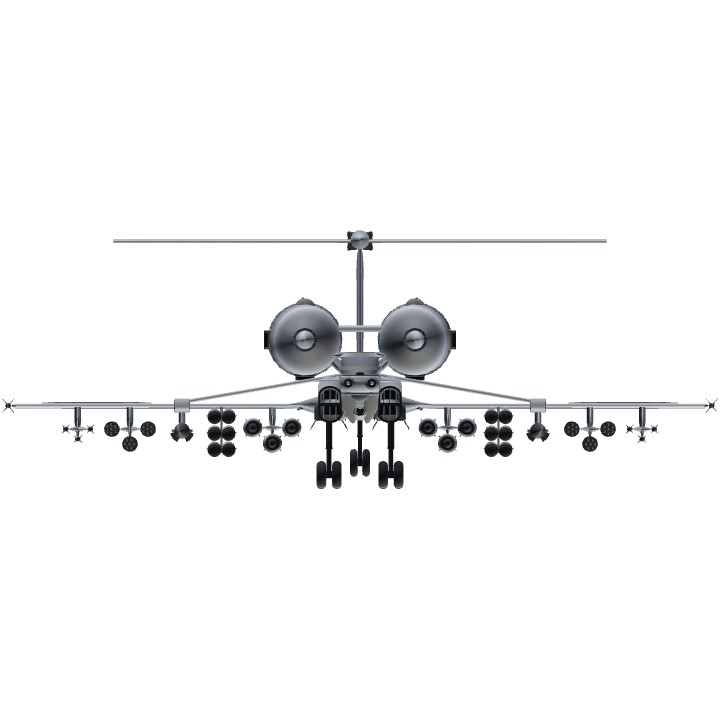The Clyde was introduced towards the tail end of the Legault conflicts. Designed as a ground-superiority fighter the vehicle boasted the ability to meet a frankly ridiculous amount of payload requirements and mission needs. Featuring a unique semi-lifting body constructions interspersed with conventionally sufficient aviation tropes this craft is a mix of classic and future.
The craft was loved as much as it was hated for varying reasons. The love came from the fact that it'd airlift as much death as you wanted to give to it. The hate came from the ride you'd get as a pilot trying to do so. The entire craft was built around the chin mounted 'Trimark' air artillery gun. Pilots came to instead nickname the plane the "BallBuster" as when you were firing the cannonery the fact that it was situated directly below you in the cockpit meant that each report had a fair chance of sterilizing you through sheer vibration. Be that as it may the main armament is enough to leave this plane as a strong grim reaper even without the extra armaments. High velocity and very powerful, the guns are ship-sinkers.
On top of the guns the front of the craft houses 2 'Ryder' rotary guns that take care of both other aircraft and disparate ground forces alike. The wings of the Clyde have been very heavily reinforced on the inner section to allow for practically any weapon to be hoisted.
Targeting systems for the craft allow for air and ground engagement in equal measure though it'd be a lie to say that the plane has any chance against a decent pilot in an interceptor type. Maneuverability is set to allow level and clean passes on ground targets. When engaged by aerial units the Clyde has a few options. One, lies with its engines. The Clyde was designed with 2 very advanced 'PenDragon' ram-draw ducted fans. They are setup to keep the plane comfortable in the 4-500 mph range for sorties but the system comes equipped with an afterburner set-up to allow for increased speed and altitude capability when necessary. Running this vehicle at 100 percent throttle yields the pilot with a rapid fuel consumption which is why the Clyde was given an enormous reserve of the stuff. Option 2 is to stick to the strengths of the plane. This means staying close to the earth and pivoting/turning inside an opponents turning radius while using the countermeasures built into the plane to save the user from missile strikes. Armor being doubled and tripled up to what it is on the Clyde means your chances of survival aren't low, but your chances of actually winning in a dogfight may be. (poorly simulated).
Allinall , the Clyde serves as a very proficient close-in air support craft that can loiter for very long periods of time if treated correctly. The plane has served to save many ground force lives and has been instrumental in completing the COIN ops it has led the way on. It has seen service for decades and will continue to do so as it is simply too good at "throwing everything we've got" at targets.
Pilot instructions:
AG groups are-
1. rear active aero (pitch operated)
2. detach rockets
3. Detach missiles
4. Detach bombs
7. Activates flaps rotator
8. deactivates flaps slatting with landing gear
When heavily loaded (as this rendition is) you've want full trim, and high flaps active on take off and landing. The amount of power in the engines(18000hp combined and quite a bit more in lb-thrust when after is active) means that at low speeds the engines have a tendency to pitch the plane down heavily.
If active aero is on do not roll and pitch hard at the same time. You can, but expect "opposite" roll from the direction you're pulling.
During flight, Trim is your best friend, it will keep you level for target acquisition and held down when unladen.
The clyde has a slight issue with latent roll regardless of correction attempts.
Specifications
General Characteristics
- Predecessor HVY Attack Aircraft Challenge (Closed!)
- Created On Windows
- Wingspan 61.3ft (18.7m)
- Length 62.2ft (19.0m)
- Height 22.4ft (6.8m)
- Empty Weight 42,217lbs (19,149kg)
- Loaded Weight 59,626lbs (27,046kg)
Performance
- Power/Weight Ratio 0.339
- Horse Power/Weight Ratio 0.301
- Wing Loading 52.0lbs/ft2 (253.8kg/m2)
- Wing Area 1,147.0ft2 (106.6m2)
- Drag Points 11347
Parts
- Number of Parts 362
- Control Surfaces 11
- Performance Cost 1,969







updated. might be a tad late but whatever. wanted it out there
@tgtfredsw Hit the blue button that says download.